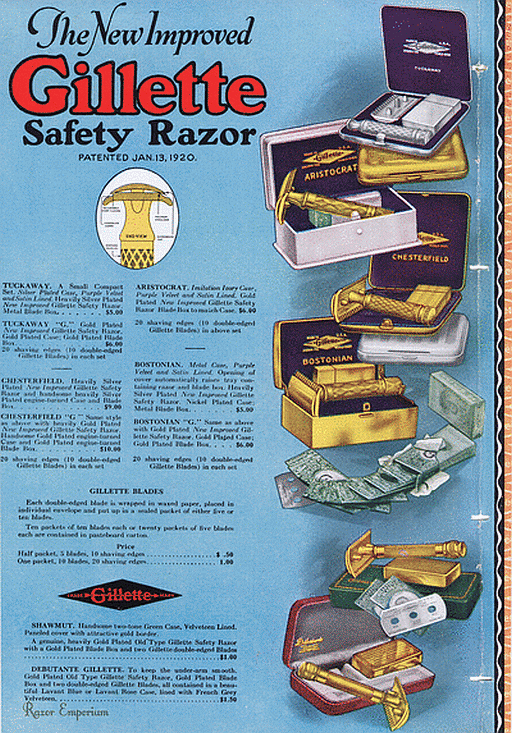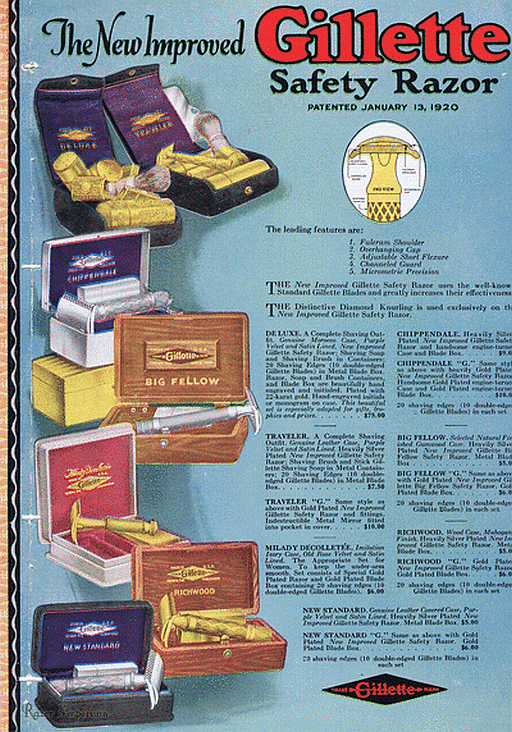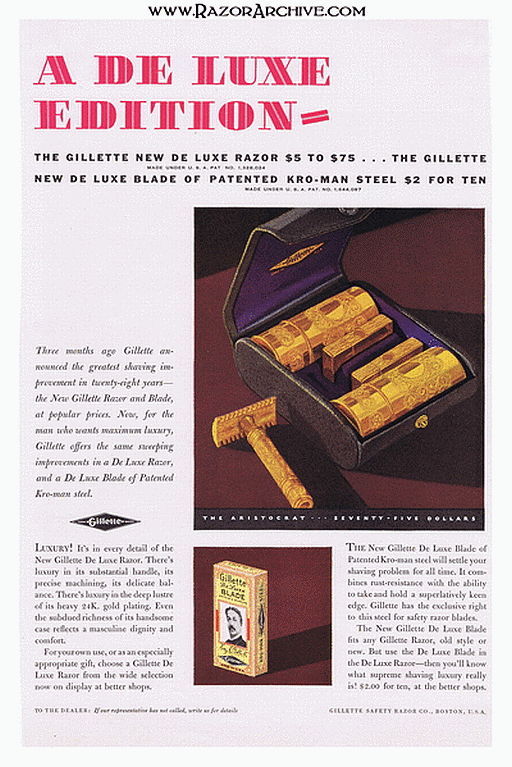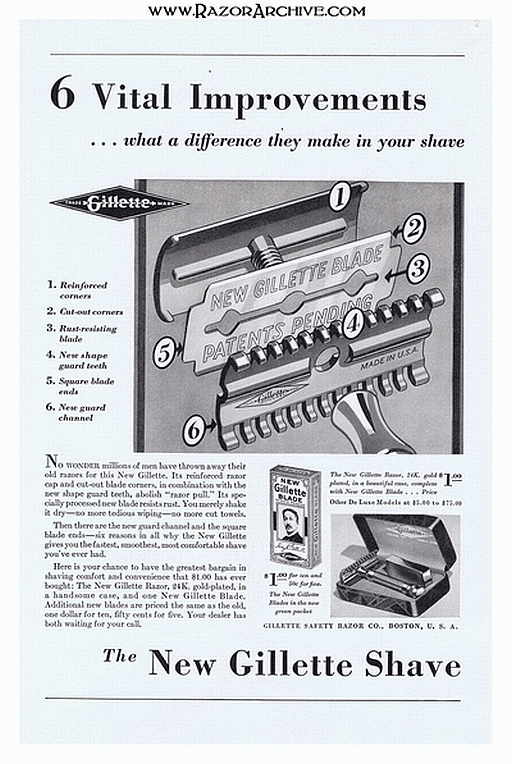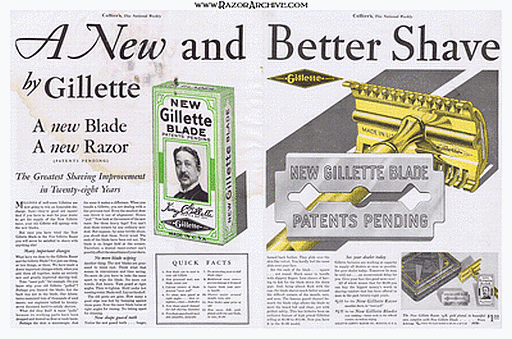Here is the third in this fascinating series of articles by Matt Pisarcik of Razor Emporium:
1920’s: The New Improved
The 1920’s brought with it the first major change to the original “Old Type” razor design, dubbed “The New Improved.” Not only did this razor address some of the design and performance concerns of the first series of razors Gillette put out, but it also created the first complete “line-up” of razors available. No longer were owners presented with one choice of a Gillette razor, but now had the option of selecting between differently styled models such as “The Richwood”, “The Bostonian” and even “The Big Fellow.” And with each name came a different styled case and brand persona that was created. Some of these names went on to incarnate themselves throughout several more decades and razor lines, most notable “The Aristocrat.” As simple as this seemed, this model would continue throughout Gillette’s history: offering the same product in different styles to better capture customers with the gimmick of packaging and persona. Just another marketing strategy that later automobile, telephone and wrist-watch companies caught-onto.
1930’s: The Goodwill
Towards the end of the 1920’s the stock market crash affected the entire world over. And whilst still manufacturing razors, Gillette had to change their approach when entering the next decade. They even scrapped many luxurious and high-end models such as the “De Luxe Edition” in favor of budget razors for the first few years after the crash. In an effort to stay current with the nation’s climate, Gillette launched the NEW razor, in line with President Roosevelt’s social recovery plan the New Deal.
Again, these promised even further revisions and improvements to the razors that had just came out years earlier. The real secret behind the ongoing razor improvements was expiring patents and keeping third-party blade makers behind the curve as they started to encroach on Gillette’s bread-and-butter business model. With this model of razor, notice that a new style of blade is again issued to be used in conjunction with the new shaver—a model that Gillette continues to use even today.
Advert images from Razor Archive.
